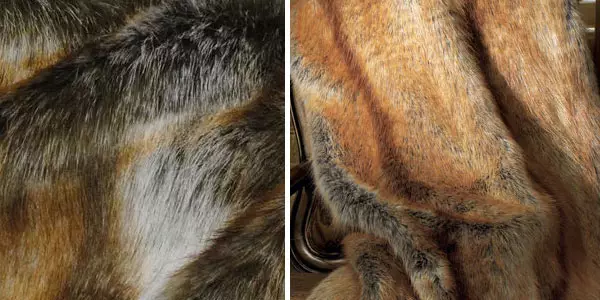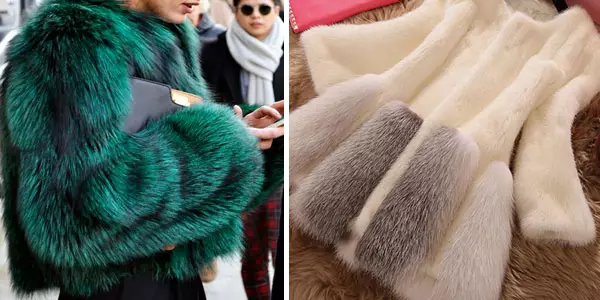
To date, the fur is the king of materials protecting from winter jellows. In ancient times, a large and beautiful animal skins talked about luck and hunting skill. Subsequently, fur has become equivalent to wealth and high social status, and retain this status to the present. As the civilization develops, the furs of wild animals has become more difficult, the breeding of fur animals expanded, and the art of processing the skins, the rules of the selection and cutting of natural fur raw materials became more complicated. Against this background, public movements began to be formed, calling for the preservation of wildlife and protesters against animal abuse. The alternative to the above problems was the fur fabric - artificially created material, imitating natural fur.
Features and characteristics of artificial fur
The man-made fur material can be obtained from various raw materials and with the help of various technologies, but its structure is always the same. It consists of two layers - a smooth base and a fluffy pile. As a basis, a woven or nonwoven material from:
- cotton;
- synthetics;
- wool;
- Mixed fibers.

The pile is most often formed from thin synthetic threads (acrylic, polyester, polyamide), less often with natural wool. The compound of the pile and the base can be carried out by different methods. The simplest and least reliable of them are adhesive, which is now applied rarely. More reliable is the molding of fur in the process of creating the main web, which may be:
- woven, while, except for the main and wearing thread, they also use the third, forming the pork;
- knitted when the base loops are involved in long loops or puppies of pile fibers;
- non-hard or tuffing, stitched pyty.
After the manufacture of fur fabric, the base is processed to fix the villi, and then they are cut, including on an unequal height, produce coloring, imitating natural fur cover or creating original color effects. To do this, use various stencils, airbrushing, layers, and other complex methods. To simulate natural curls and the formation of a heterogeneous pile structure, its heat treatment is made.
Article on the topic: A variety of lamps in the style of Provence
Modern technologies for the production of artificial fur reached such perfection, which visually establish the difference between natural and man-made materials is very difficult . However, their characteristics will definitely differ. First of all, an artificial pile is kept warm much worse than natural, so no fur coats and caps are not suitable for harsh winters. In addition, the synthetic threads are hard to touch, they are electrified and attract polluting them solid particles, and wears much faster than their natural analogues. At the same time, the fur fabric has many advantages, namely:
- Uniformity of invoice and ease of cutting;
- a variety of species and colors, including creative;
- low cost;
- resistance to moth;
- easy to operate and care;
- Symbolizes the protection of nature and humanity in relation to the animal world.
What to sew and how to care?
The availability of artificial fur materials led to a significant expansion of their use. In addition to traditional warm clothes, hats, shoes, a variety of finishes, artificial fur are used to decorate the interior, upholstery of furniture, creating various accessories, plaid, carpets and rugs, soft toys and many other things. Such products are beautiful and original, and with appropriate care will look attractive for a long time.
The main problem of the synthetic pile is the ability to accumulate dust, so the main rules for the care of fluffy things is their regular cleaning with a vacuum cleaner or brush. Continuous friction should be avoided on the same sites, as well as moisture effects. However, many products from synthetic fur can be erased. This is done very carefully, in warm water, without applying mechanical effort. When drying, you need to avoid sunlight and heating, and after the final drying, the pile is combing.
